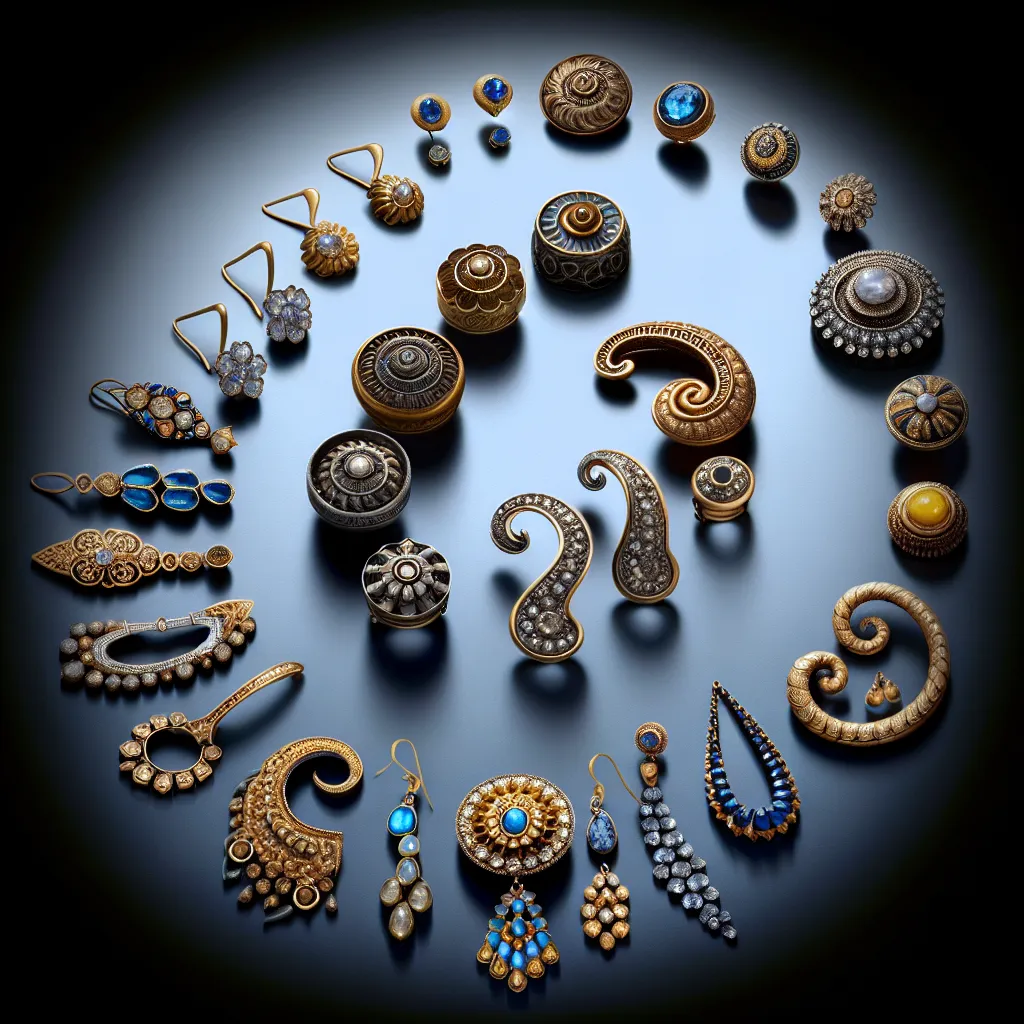The Origins of Ear Piercing and Early Earring Styles
Ear piercing and the tradition of wearing earrings have been a part of human history for millennia, with evidence of ear piercing dating back to ancient times. The exact origins of ear piercing are not entirely clear, but it is believed to have originated more than 5,000 years ago. In ancient cultures, ear piercing was not only a form of body adornment but also held cultural and religious significance. For example, in ancient Egypt, earrings were seen as a symbol of wealth and social status, and both men and women adorned themselves with elaborate earrings made from a variety of materials including gold, silver, and precious gemstones.
Similarly, in ancient Greece and Rome, earrings were worn as symbols of status and also as protective talismans. The early earring styles from these civilizations often featured intricate designs and were crafted using techniques that are still admired today. As trade routes expanded, earrings and ear piercing traditions were exchanged between cultures, leading to the evolution of earring styles and designs influenced by different regions.
Throughout history, different ear piercing techniques and earring styles have emerged. In some cultures, stretching the earlobes to accommodate larger ear ornaments became a common practice. In other cultures, cartilage piercings and the use of non-traditional materials for earrings, such as bone or wood, became popular. The versatility and adaptability of ear piercing and earring styles showcase the rich diversity and creativity of human civilizations throughout history.
As time passed, ear piercing and earring styles continued to evolve, with influences from fashion trends, technological advancements, and global interactions. Today, the popularity of ear piercing and earrings knows no bounds, with a wide range of styles, materials, and techniques available to suit individual preferences and tastes.
In conclusion, the history of earrings and ear piercing is a reflection of the ever-changing tapestry of human culture and creativity. From its ancient origins to the modern trends of today, earrings have remained a timeless and cherished form of self-expression and adornment.
Evolution of Earrings: Cultural and Symbolic Significance
Earrings have been an essential form of body adornment throughout history, with a rich cultural and symbolic significance. From ancient times to modern trends, the evolution of earrings reflects the diversity of cultures and their distinctive symbolism.
In ancient civilizations, earrings were not only a fashion statement but also held deep cultural and symbolic meanings. In Egypt, earrings were worn by both men and women as a symbol of wealth and social status. The type of earring worn also conveyed specific messages; for example, the “ankh” symbol earrings represented life and immortality.
Moving to ancient Greece, earrings were associated with the worship of gods and were believed to provide protection and guidance. The intricate designs of Greek earrings often featured symbols of gods and goddesses, showcasing their religious significance.
In Asia, earrings have been an integral part of traditional attire and cultural rituals. For example, in Indian culture, earrings are an essential bridal accessory, symbolizing marital status and prosperity. The designs and materials used in traditional Indian earrings vary by region, showcasing the diverse cultural influences.
Fast forward to modern times, and earrings continue to hold symbolic significance. From the rebellious statement of punk culture with safety pin earrings to the cultural significance of hoop earrings in Latinx communities, the evolution of earrings reflects the ever-changing cultural landscape.
Furthermore, earrings are often used as a form of self-expression, with individuals choosing designs that hold personal significance or convey specific messages. For example, wearing earrings featuring symbols of empowerment or cultural heritage serves as a way for individuals to express their identity and beliefs.
In conclusion, the evolution of earrings has been shaped by cultural and symbolic significance, reflecting the values and beliefs of societies throughout history. Today, earrings continue to be a powerful form of self-expression and cultural representation, blending tradition with modern trends.
Contemporary Earring Trends: Influences and Innovations
Contemporary earring trends have been shaped by a diverse range of influences and innovations, reflecting the dynamic nature of fashion and personal adornment. From ancient civilizations to modern designers, the evolution of earring styles has been a fascinating journey. In recent years, the rise of social media and fashion influencers has played a significant role in driving earring trends, with certain styles gaining widespread popularity due to their visibility on platforms like Instagram and Pinterest.
One notable influence on contemporary earring trends is the revival of vintage and retro styles. Earrings inspired by the Art Deco era, as well as styles from the 1960s and 1970s, have made a strong comeback, appealing to those seeking a nostalgic and eclectic look. Additionally, cultural influences from around the world have permeated earring designs, with motifs and techniques from diverse traditions being incorporated into modern pieces.
Technological advances have also led to innovation in earring design, with 3D printing and other cutting-edge methods enabling the creation of intricate and unconventional shapes. Furthermore, sustainability and ethical sourcing have become increasingly important in the jewelry industry, prompting the emergence of eco-friendly earring options made from recycled materials or ethically sourced gemstones.
In summary, contemporary earring trends are a reflection of the past, present, and future of jewelry design. Influenced by a myriad of factors including social media, cultural inspirations, and technological advancements, today’s earring styles offer a diverse and exciting array of options for fashion enthusiasts and jewelry connoisseurs alike.



